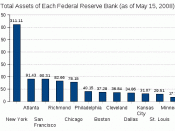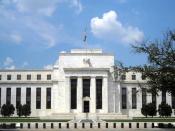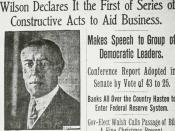Every Capitalist nation has a monetary system basically similar to ours. As a consequence, all have developed central banks whose duties are essentially like those of the Federal Reserve, namely, to exert control over the direction and extent of changes in the money supply.
The aim of all central banks is also the same. They want to keep their economies supplied with the "right" amount of money. If money supplies are scarce, the economy will suffer as if it were in a straitjacket. Households and business alike seeking in vain for credit from their banks, and householders and business alike contracting their economic activity as a result. If money supplies are too large, householders, and businesses will find themselves with larger bank accounts than normal, and will be tempted by their liquidity, or by the low interest rates offered by their banks, to increase their spending.
This would seem to make the task of the Federal Reserve rather easy.
All it has to do is to take the temperature of the economy and adjust the amount of money accordingly. If the economy is "overheated," with inflation or worsening, clearly it is time to cut back on the availability of money. If the economy is in a depression, with unemployment rising, just the contrary must be the proper course. It sounds, therefore, as if the job of the central banker is an easy one. As we shall see, it is not.
How does a central banker increase or decrease the supply of money? The key lies in the fact that we have a fractional reserve system in which banks can make loans or investments with "excess" reserves. Excess reserves are simply cash or deposits at the Fed that are greater than those required by law to back up their customers' deposits.


